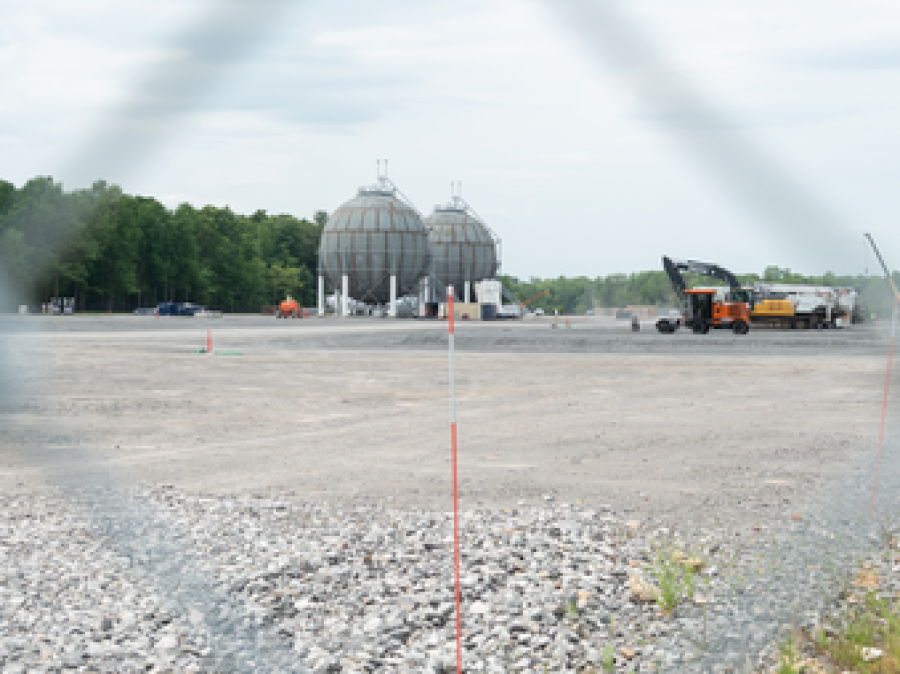
“Developing Stories: Native Photographers in the Field,” featuring essays and images of Native American photographers, is on exhibit at the New York City branch of the National Museum of the American Indian until March 12, 2023 and features the work of photojournalists Donovan Quintero (Navajo), Tailyr Irvine (Salish and Kootenai), and Russel Albert Daniels (Dine’ descent and Ho-Chunk descent). In addition to the online and in-person exhibition, on February 4 the museum sponsored “Fresh Focus on Native American Photography”,” featuring the aforementioned photographers as well as art photographers Tom Jones (Ho-Chunk) and Nia MacKnight (Hunkpapa Lakota and Anishinabe), whose works are also on display. I spoke with Cecile Ganteaume, Curator of “Developing Stories,” and Daniels prior to the symposium.
Phoebe Farris: The current exhibition uses the term photojournalist, although many of the photographs have outstanding artistic qualities. As a curator, how do you distinguish between photojournalists and art photographers? How did you decide which category to use when identifying these individual photographers?
Cecile Ganteaume: They identified themselves as photojournalists and they all delve into contemporary issues from a news perspective...issues such as their concerns with stereotypes of Native Americans that are still being perpetuated. I chose their works because of their aesthetic qualities as well as journalistic importance. And, as I said, the photographers consider themselves photojournalists.
PF: Donovan Quintero is an enrolled Navajo and Russel Albert Daniels is of Dine' descent and Ho-Chunk descent. Tribal enrollment at times can be controversial or political and did not even exist until colonization and government-imposed reservation relocations. As a curator, how do you decide which artists to include in Native American exhibits? How do you distinguish between important, relevant and committed artists like Russel and others whose identity is questioned?
CG: At the NMAI we have a responsibility to address this issue. We ask artists if they are or are not tribally enrolled. We understand that some Native Americans are not enrolled, but descended from a particular Tribe or Tribes. We have calm conversations and ask artists about their backgrounds to better understand them.
PF: How did you and your collaborators, Tristan Ahtone (Kiowa), editor-in-chief at the Texan Observer, and John Smock, director of photojournalism at the Craig Newmark Graduate School of Journalism, select these three photographers from so many Native American photographers on the art and journalism scenes?
CG: We did a call out to photographers to submit a proposal that would be juried. We requested a budget, a timeline, and a concept for a photo essay. We considered if their work was newsworthy, the quality of their photos, the aesthetics of their photos, their technology skills, and their points of view.
PF: Can you please tell our readers about your background and how you entered the curatorial field?
CG: I have an art history and anthropology background and went to college across the street from the New York Metropolitan Museum of Art. All through college I volunteered at the Met. After college I worked in their African and Oceanic department. I was always interested in Native American art and materials. I also worked at the older, previous NMAI located in upper Manhattan.
PF: There are not many Native American curators compared to Native American artists. Do you have any advice for young Native people who are considering becoming curators or entering other types of museum administrative fields?
CG: I would suggest that they study disciplines such as art history, American history, Native American art history, and Native American studies.
PF: Recently I read an article about art photographer Cara Romero (Chemehuevi) in which she stated that often institutions do not know where to place her work, and wonder if it should be in their photography collection or Native American collection. As a curator, how do you feel about that?
CG: I am familiar with her work. Cara Romero is a stunning photographer and should not be pigeonholed.
PF: What future NMAI projects are you working on? Will you continue to collaborate with Russel, Tailyr, and Donovan?
CG: I am working on a retrospective of Navajo weaver D.Y. Gay for a Fall 2024 opening. As far as photography, we at the NMAI are interested in collecting more photos for our permanent collection.
--Phoebe Mills Farris, Ph.D. (Powhatan-Pamunkey) is a Purdue University Professor Emerita, photographer, and freelance art critic.
Top image: "Public Health Message." Chinle, Arizona, Navajo Nation, July 10, 2020
Read: Developing Stories: Native Photographers in the Field
Read: An Interview with Photojournalist Russel Albert Daniels


